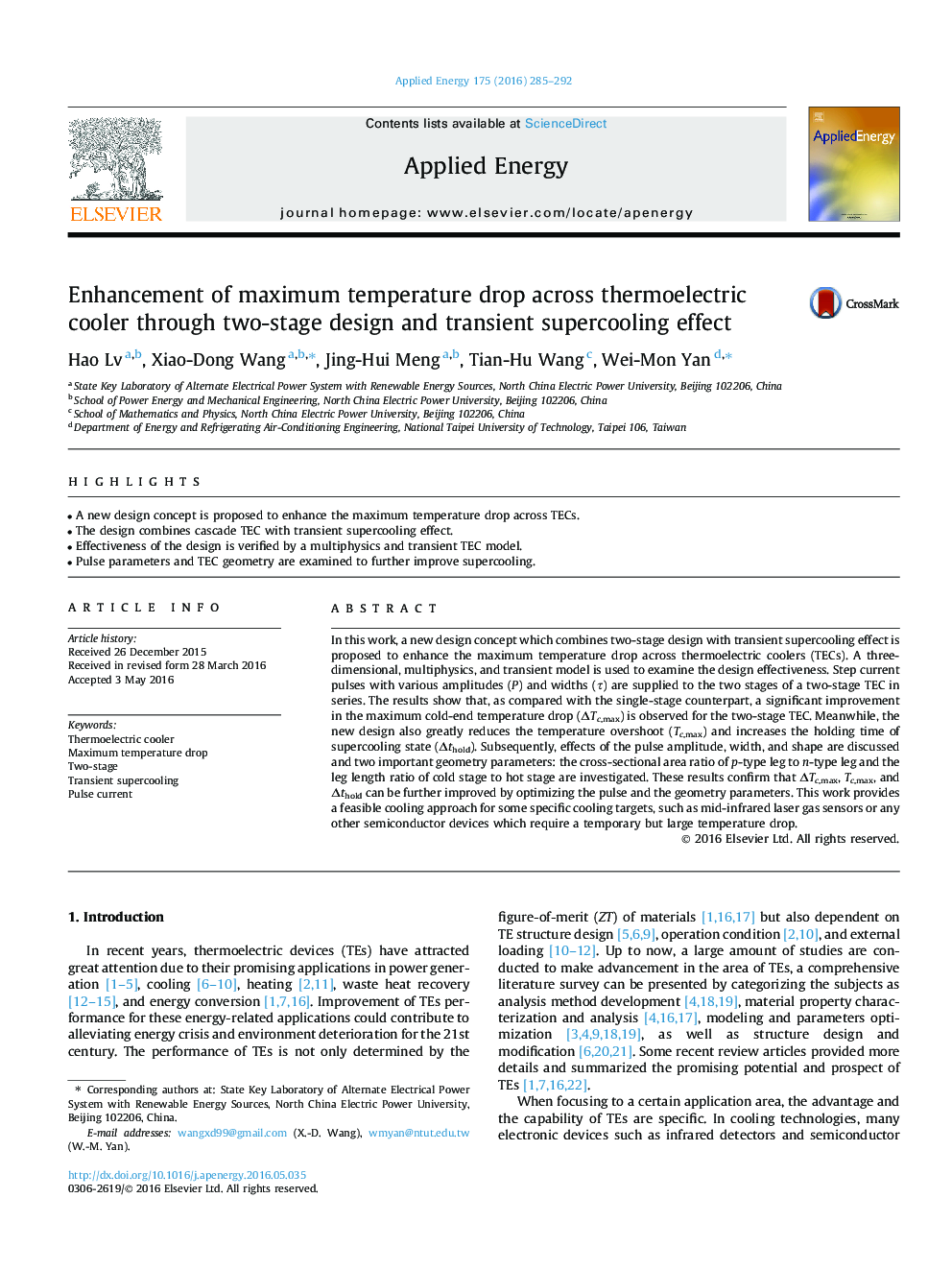| Article ID | Journal | Published Year | Pages | File Type |
|---|---|---|---|---|
| 6682986 | Applied Energy | 2016 | 8 Pages |
Abstract
In this work, a new design concept which combines two-stage design with transient supercooling effect is proposed to enhance the maximum temperature drop across thermoelectric coolers (TECs). A three-dimensional, multiphysics, and transient model is used to examine the design effectiveness. Step current pulses with various amplitudes (P) and widths (Ï) are supplied to the two stages of a two-stage TEC in series. The results show that, as compared with the single-stage counterpart, a significant improvement in the maximum cold-end temperature drop (ÎTc,max) is observed for the two-stage TEC. Meanwhile, the new design also greatly reduces the temperature overshoot (Tc,max) and increases the holding time of supercooling state (Îthold). Subsequently, effects of the pulse amplitude, width, and shape are discussed and two important geometry parameters: the cross-sectional area ratio of p-type leg to n-type leg and the leg length ratio of cold stage to hot stage are investigated. These results confirm that ÎTc,max, Tc,max, and Îthold can be further improved by optimizing the pulse and the geometry parameters. This work provides a feasible cooling approach for some specific cooling targets, such as mid-infrared laser gas sensors or any other semiconductor devices which require a temporary but large temperature drop.
Related Topics
Physical Sciences and Engineering
Energy
Energy Engineering and Power Technology
Authors
Hao Lv, Xiao-Dong Wang, Jing-Hui Meng, Tian-Hu Wang, Wei-Mon Yan,
